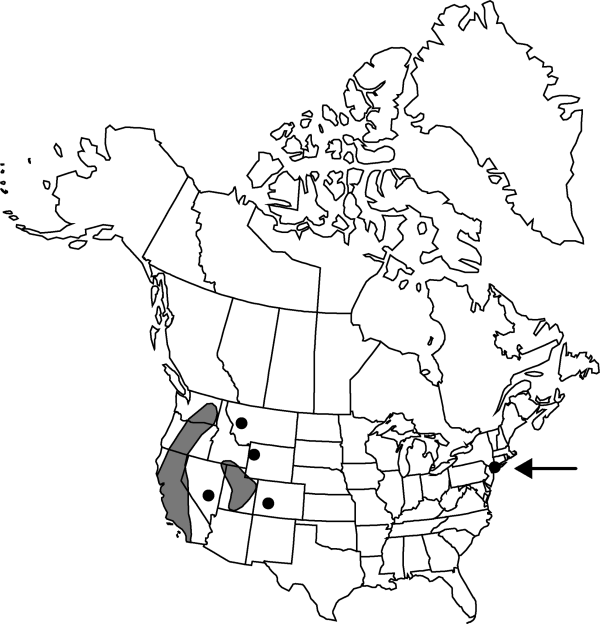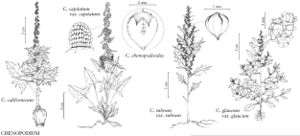Chenopodium chenopodioides
in C. Osten et al., Ostenia, 98. 1933.
Stems erect to prostrate, much-branched, 0.1–3.5 dm, glabrous. Leaves nonaromatic; petiole to 0.28 cm; blade deltate or narrowly deltate, 0.8–6 × 0.2–3.5 cm, base cuneate, margins entire or broadly dentate, apex acute to obtuse. Inflorescences lateral glomerules sessile on lateral branched spikes; glomerules subglobose, 3–4 mm diam.; bracts oblanceolate to linear, 0.2–1.5 cm. Flowers: perianth segments 3, connate almost to apex into 0.5–0.8 mm tube; lobes deltate, 0.1–0.5 × 0.3–0.4 mm, membranous, apex acute, flat or occasionally keeled-corniculate, glabrous, green and covering fruit at maturity; stamen 1; stigmas 2, 0.2 mm. Utricles ovoid; pericarp nonadherent, reticulate-punctate. Seeds vertical and horizontal, ovoid, 0.6–0.9 mm diam., margins rounded; seed coat black, smooth.
Phenology: Fruiting summer–fall.
Habitat: Borders of lakes and ponds, lake bottoms, in fields
Elevation: 100-2400 m
Distribution

Calif., Colo., Nev., Oreg., Utah, Wash., Wyo., South America.
Discussion
The name Chenopodium botryodes Smith was sometimes applied to C. chenopodioides because of uncertainty about the proper application and typification of the name Blitum chenopodioides Linnaeus. The recent publication by P. Uotila (2001) provides a reasonable solution by maintaining the traditional usage through neotypification of the Linnaean name.
Selected References
None.
